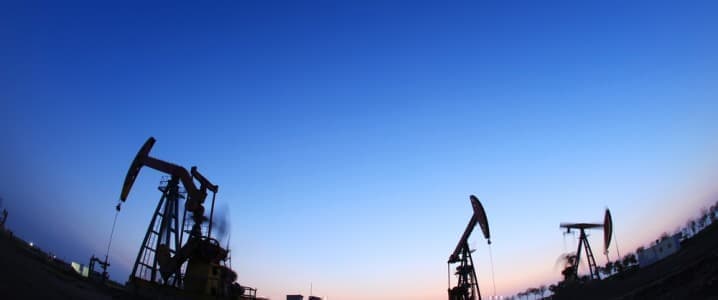With world leaders meeting this week at the UN Climate Change Conference (COP26) in Glasgow, a number of emerging markets have demonstrated their willingness to work with international partners on the matter of reducing methane emissions.
US President Joe Biden’s final speech in the context of the summit focused on methane emissions, and specifically the Global Methane Pledge.
Launched in September and led jointly by the US and the EU, the Global Methane Pledge represents the first coordinated international effort to address methane emissions. Its goal is to precipitate a 30% drop in global emissions – relative to 2020 baseline levels – before the end of the decade.
Methane emissions are the second-biggest cause of global warming after carbon dioxide.
According to the latest report by the Intergovernmental Panel on Climate Change, methane was responsible for approximately half of the 1°C net rise in global average temperatures since the pre-industrial era.
Action to reduce emissions is thus a key element of broader decarbonisation efforts. If the pledge’s targets are met, it could potentially result in a reduction of 0.2°C in global warming by 2050. While this may not sound like a huge difference, it would play a significant role in reducing the frequency and force of extreme weather events.
In light of this, signing up to the Global Methane Pledge has been called the most significant single action that world leaders can take in the context of COP26.
Alongside richer nations, the pledge has garnered the endorsement of a number of emerging economies, among them Argentina, Indonesia, Mexico and Nigeria. Brazil, which is one of the world’s top-five biggest emitters of methane, has also signed the pledge.
The complete list of supporting countries now totals more than 100, and together accounts for around half of global methane emissions, as well as 70% of the global economy.
Approaches to cutting emissions
The technology required to meet the pledge’s goals already exists. The UN Environmental Programme’s recently released Global Methane Assessment underlines that nearly half of the methane released through human activities could be cut by the end of this decade and that affordable tools to do so are already available.
In addition, advances in satellite technology have made it easier to detect and address methane leaks, providing what the European Space Agency has called “an important new tool to combat climate change”.
Alongside technological solutions, there is a range of practice-based solutions available to countries seeking to reduce their emissions.
Agriculture is a major contributor to global methane emissions, with rice cultivation representing 10% of total anthropogenic emissions and livestock farming 30%.
Given that agriculture remains the backbone of many emerging market economies, innovations on this front could significantly reduce global emissions without leading to the destruction of agricultural industries.
Thankfully, there are various tried-and-tested solutions. In the case of rice cultivation, alternating irrigation considerably reduces emissions, as well as increasing yields. This method has seen notable success in West Africa, Tamil Nadu in India, and southwest Asia.
Meanwhile, the “methanisation” – or transformation into biogas – of animal manure and other agricultural waste products can considerably reduce emissions.
In Thailand, for example, biogas is produced from the waste streams of its cassava starch sector and pig farms.
Diplomatic hurdles
While the Global Methane Pledge is indicative of a growing political will to leverage such technologies and practices in the fight against methane emissions, there is still some way to go in terms of global diplomacy.
Notable in their absence from the pledge’s list of supporters are China, India, and Russia, three countries that together account for around one-third of methane emissions. Australia has similarly refrained from signing up.
In an indication of some of the difficulties facing those who are working towards a multilateral consensus on emissions, a statement released in mid-October by the Like-Minded Developing Countries group – which includes China, India, Egypt, Indonesia, Saudi Arabia, and Vietnam – described the goal of net-zero emissions by 2020, which has been pushed by some developed nations, as being “anti-equity and against climate justice”.
The group accused richer nations of refusing to address their historical responsibility for initiating climate change, and of trying to shift responsibility onto developing nations.
Indeed, the absence of Chinese President Xi Jinping and Russian President Vladimir Putin from the COP26 meeting was seen by many as an indication of how difficult it could be to achieve any global consensus.
More Top Reads From Oilprice.com:
- Aramco CEO: Underinvestment In Oil Is A ‘’Huge Concern’’
- A Cold Winter Could Double Natural Gas Prices And Send Oil To $100
- Money Managers Are Throwing Their Weight Behind The Oil Price Rally



















I have read through Mother Earth News Magazines where Farmers form concrete Manure Pits, cover them with plastic, add bacteria, and use the gas to run generators to power the Farms. Now that is computer-controlled so it costs many $$$. I have read where methane and sodium hydroxide are mixed under heat which gives off sodium molecules that form pure sodium (explosive when solid and dropped in water). The article stated that the by-product was Carbon Monoxide (CO) and Methane Gas. It's been 40+ years since taking Chemistry, but I assume that when burned, the Oxygen from the CO would act as an oxidizer for the H4 Hydrogen which could be burned for a generator, which leaves the Carbon for us to filter out to either apply to Farm ground or convert to activated carbon for flue gas removal of toxic metals from flue gases at coal- burning power plants.